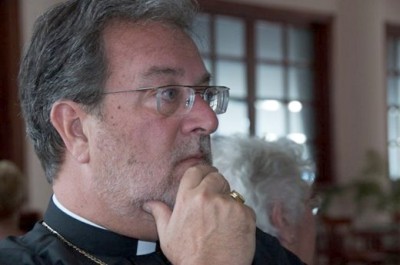
The early Church focused its life around the Passion narrative and the Resurrection. St. Paul reminds us to preach Christ crucified and risen from the dead. The early Patristic writings show this emphasis on the story of our Lord’s Passion and Resurrection. And, as we study the worship of the early Church we know it centered in the Eucharistic feast, which has its roots in the meal of the Upper Room and the continued proclamation of those events. Yet, those events are clearly linked to the story of the birth of our Lord Jesus. The introduction of the Feast of the Nativity was more than the Churches efforts to baptize the pagan holiday of Saturnalia. The Feast of the Nativity recalled to the people of God that the savior of the world has come among us (God with us). The Incarnation is critical to understanding the Good News.The story of the obedience of the young virgin, Mary, conceiving a child by the Holy Spirit, and then giving birth in a small middle-eastern town, Bethlehem, stirs the hearts of believers around the world. The simplicity of the story and the circumstances surrounding the Messiah’s birth give emphasis to the profound truth that heaven and earth are united and God has come among His people. The Church, like Mary, will this season “ponder these events in her heart.”
Our various cultures will celebrate the Feast of the Nativity in different ways. But central to all our gatherings will be the Celebration of the Holy Eucharist. Our only response to the Incarnation and the Nativity is worship. We are drawn to join the angels, the shepherds and the wise men to come in our hearts to Bethlehem and worship the newborn King.
The Charismatic Episcopal Church began in the Pro-Life Movement. It was here that the Lord Holy Spirit gave us the revelation of Convergence Worship. Those who were, because of their faith and the leading of the Holy Spirit, activists in the Pro-Life demonstrations and rescues were drawn by the Lord to worship in a manner that was fully charismatic, fully evangelical, and fully sacramental/liturgical. The adoption of signs and symbols, as well as the ancient patterns of worship, were not a journey towards something but were rooted in the same desire of the shepherds and wise men to come and worship the babe in the manger who they recognized as the Lord life and the King of a kingdom that will never end.
Around the world today, the Lord is adding to our numbers. The CEC continues to grow and we continue to get inquires from India, Europe, South America, and Asia. But more importantly, in our churches the Gospel of life continues to be preached and lived out day after day and Sunday after Sunday. Lives are being transformed through the working of the Holy Spirit. Marriages are being restored, people are being set free from addictions, families are being strengthened, fatherless children are receiving ministry, children are being educated, the hungry are being fed, prisoners are being visited, the homeless are being given shelter, military personnel are receiving ministry, the sick are being healed, and the Gospel is being proclaimed.
Christmas reminds us that the Savior has come into the world and so we have hope. The truth of Christmas continues to motivate believers to action. The Feast reminds us that like Mary and Joseph who were entrusted with the care of the infant Jesus, so we are entrusted with the Gospel. The message of “God with us”, that brought new life to us, is now to be brought to the least, the lost, and the lonely. We who have been evangelized are now called to evangelize both in word and action.
As you gather to celebrate the Feast of the Nativity may you be blessed by the presence of family and friends. May the Lord Holy Spirit draw your hearts to the babe in the manager and make you once again aware of His love.
Under His mercy,
The Most Rev. Craig W. Bates,
Patriarch


